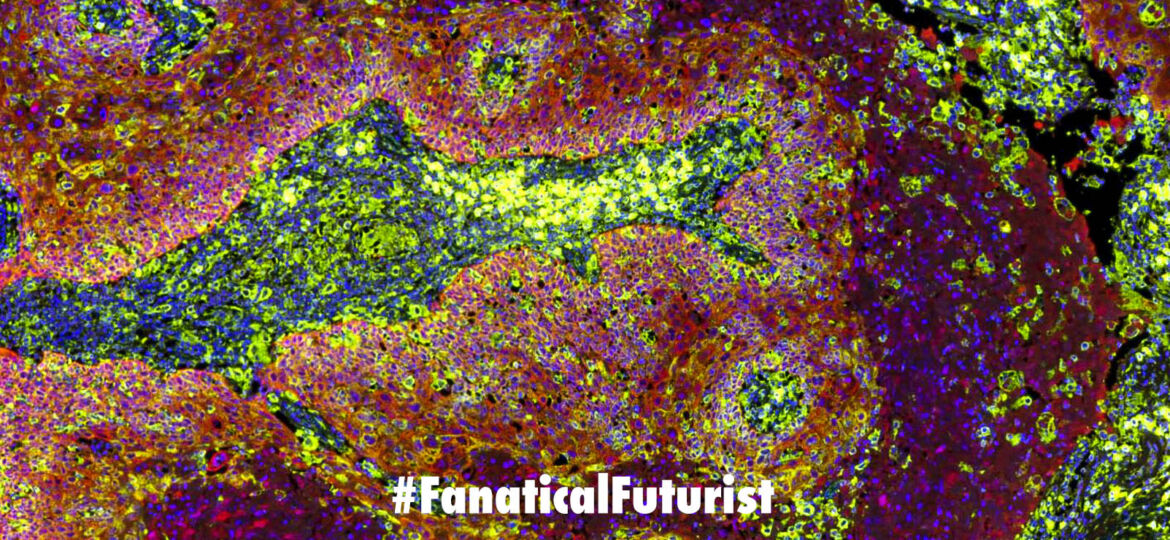
WHY THIS MATTERS IN BRIEF
The treatments to destroy and kill brain tumours hasn’t evolved very much in the past two decades, but new technologies are coming through to give us hope.
 Love the Exponential Future? Join our XPotential Community, subscribe to the podcast, future proof yourself with courses from XPotential University, read about exponential tech and trends, connect, watch a keynote, or browse my blog.
Love the Exponential Future? Join our XPotential Community, subscribe to the podcast, future proof yourself with courses from XPotential University, read about exponential tech and trends, connect, watch a keynote, or browse my blog.
Cancer is still a global killer, in fact it’s one of the world’s biggest killers, and when it comes to lethality brain tumors take top spot. So it’s not surprising that there’s a lot of research going into trying to find new ways to treat and kill them which makes innovations like this one noteworthy because it will help us accelerate the development and testing of new treatments.
The blood-brain barrier (BBB) is a vital line of defense to keep your brain safe from toxins, but frustratingly it can sometimes be too restrictive, keeping important drugs out, but now researchers at MIT have now demonstrated an accurate new model of how this barrier works, which should enable new treatments for brain cancer.
Pathogens or toxins circulating in the blood could cause some major damage if they got into the brain, so our bodies have set up a kind of checkpoint system. Cells lining the brain capillaries form a series of incredibly tight junctions, which are very selective for nutrients and other key molecules, and little else.
Unfortunately, that includes drugs to fight infections or cancer of the brain. In the past scientists have experimented with a range of ways to temporarily pry open the barrier, including magnetic nanoparticles, ultrasound pulses, or specialized nanoparticles designed to slip through and deliver drugs.
The problem is it can be hard to study how well these techniques work. Cell cultures and animal models aren’t always accurate representations of humans, and experiments in humans carry high risk. So, for the new study and following on from all kinds of other “organs on a chip” that let researchers model what goes on inside the human body but on tiny, cheap, plastic “chips,” the MIT team created the first Brain-On-A-Chip, a microfluidic model that recreates the organ more accurately.
In this case, the model contains a ball of glioblastoma cells, wrapped in blood vessel grown from human endothelial cells. To reproduce the blood-brain barrier, the model also includes pericytes and astrocytes, two types of cells involved in the formation of the barrier. The idea is to test how different treatments could open the BBB to deliver chemotherapy drugs to the brain cancer cells inside.
To check how well the model works, the researchers experimented with nanoparticles of their own design. These particles are coated with a peptide called AP2, which has been shown to help things slip past the barrier, and once inside, the particles release their payload – in this case cisplatin, a common chemotherapy drug.
And sure enough, the particles coated in AP2 were able to reach the tumors in higher numbers, releasing the drug and killing the cancer cells. Without the peptide coating, the particles tended to damage the healthy blood vessels instead. Conveniently enough, AP2 also seems to help guide the nanoparticles to the tumor site by binding to a receptor called LRP1, which appears near tumors at higher levels than it does around healthy brain blood vessels.
“We saw increased cell death in tumors that were treated with the peptide-coated nanoparticle compared to the bare nanoparticles or free drug,” said Cynthia Hajal, co-lead author of the study. “Those coated particles showed more specificity of killing the tumor, versus killing everything in a nonspecific way.”
The team now plans to use the model to experiment with other drugs and other types of brain cancer, and the research was published in the journal Nature Protocols.
Source: MIT
















